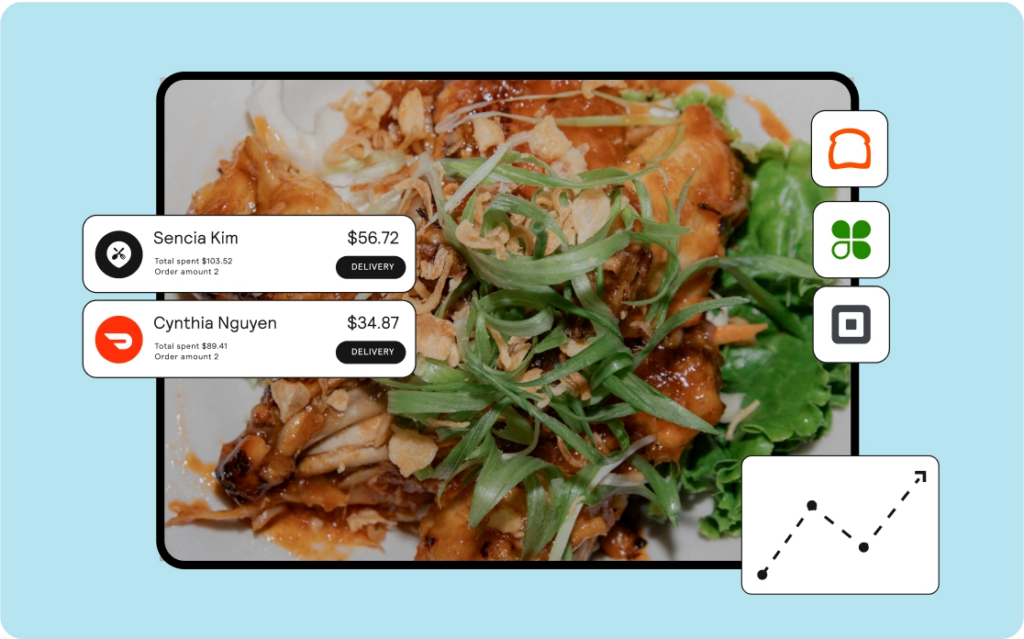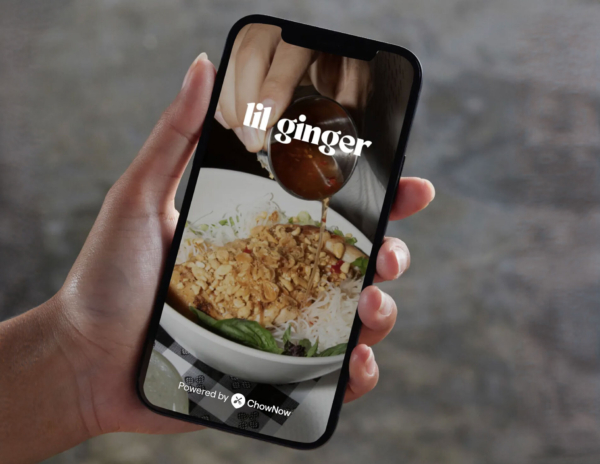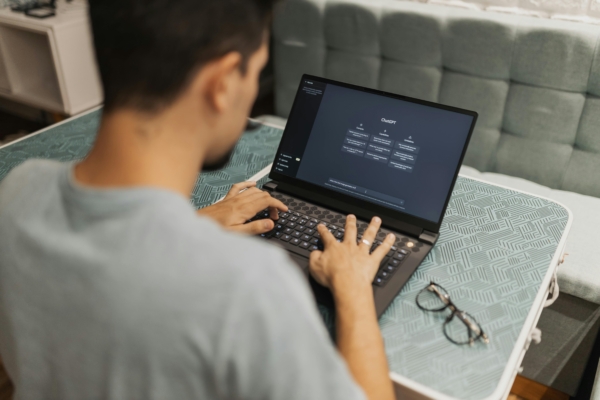How to Consolidate Delivery Apps: Streamlining Uber Eats, DoorDash, and Grubhub for Your Restaurant

Third-party food delivery apps like Uber Eats, DoorDash, and Grubhub have become essential for modern restaurants, connecting them with a vast audience of diners seeking convenience and a wide selection of cuisines across major cities and urban areas.
However, while these platforms boost sales, they also introduce significant operational complexity and additional service fees that vary based on order subtotal, delivery distance, and payment method.

For today’s restaurant owners, managing multiple third-party food delivery apps can feel like running several businesses at once.
Each system from platforms like Uber Eats, DoorDash, and Grubhub has its own tablet and order flow, making it difficult to keep operations running smoothly for local restaurants.
Fortunately, there’s a simple solution.
In this article, you will learn:
- How to consolidate your food delivery system to end tablet chaos
- How to improve order accuracy
- How to create a better experience for both your staff and your customers
The Challenge of Juggling Multiple Platforms and Food Delivery Apps for Many Restaurants
The rise of third-party platforms has created a significant operational hurdle for restaurant owners: managing a separate tablet, workflow, and set of fees for each service.
Without the right tools, handling several food delivery apps is a challenge that can quickly become overwhelming. These issues impact your efficiency and your ability to serve every customer who uses the grubhub app or other food delivery apps
Here are the biggest takeout problems operators contend with on a daily basis.
Tablet Overload Disrupts Operations
Each platform requires its own tablet and login. This forces staff to switch between devices, disrupting workflow and creating a virtual line of orders that slows down service, reducing convenience for staff and negatively impacting the overall business.

Order Management Leads to Errors
When staff must track orders across different systems, mistakes pile up. A delay in noticing a notification can affect the estimated delivery time, while a missed note can result in the wrong menu item from the restaurant’s menu being prepared.
These errors can harm your business and damage its reputation, affecting every delivery and pickup order.
Consumers report that 24.4% of the time they order food from a third-party platform, something is either missing, incorrect, or late.
Staff Inefficiency and High Fees
Your team must be trained on every platform, which takes time away from service. This is made worse by the various fees you have to manage, including commission fees, service fees, and delivery fees that impact your profitability
These challenges are even greater for businesses that partner with multiple delivery companies in different cities, each with varying service fees and checkout structures.
The Solution: A Consolidated System for Every Food Delivery Order

Order aggregation is the process of combining all incoming online orders from direct and multiple third-party delivery apps into one unified system.
A consolidated system for your food delivery offers a convenient way to streamline all your platforms into one place. This makes operations simpler for everyone and provides key benefits for both staff and customers, such as increased efficiency, improved accuracy, and exclusive perks that add value for frequent users.
More Streamlined Operations
A consolidated system eliminates multiple tablets, allowing you to ditch the clutter and manage all your online orders in one centralized platform. All delivery order and pickup order requests flow through a single interface, making pickup times easier to manage and allowing staff to track orders in real time — from when a meal is paid for at checkout to when it’s delivered to the customer’s address.
Improved Order Accuracy
With orders in one system, there is less room for human error. It’s simpler to accommodate dietary restrictions and ensure every special request is handled correctly before the order is paid and delivered.
Happier Customers

Smoother operations lead to a better customer experience.
When restaurants can process delivery orders faster and more accurately, customers receive their meals on time, as ordered, and at the right temperature.
Happy customers also leave positive reviews, increasing a restaurant’s rating on delivery platforms, which in turn attracts more orders.
A consolidated system also enables better tracking and communication, helping restaurants provide reliable service that keeps customers coming back.
Key Features to Look for in a Consolidation Solution
A true consolidation solution is built on a smooth POS integration, which automatically feeds all order information into the system your kitchen already uses.
Here are the key features to look for.
Seamless POS Integration

A good consolidation solution should integrate directly with your restaurant’s POS, ensuring that all online orders automatically flow into the same system as in-house orders. This ensures all online orders, including the customer’s address detail and requests, automatically flow into the system your staff already uses without needing a separate account.
Without this integration, staff have to manually enter delivery orders into the POS, increasing the risk of errors and slowing down service.
A strong integration ensures that orders flow directly into the POS, allowing your kitchen and front-of-house teams to manage everything from one dashboard. Additionally, a robust system with advanced order aggregation capabilities can improve response times and minimize missed or delayed orders.
ChowNow integrates with over 45 of the restaurant industry’s leading POS systems, so you can consolidate orders and seamlessly manage takeout smoothly.

A Single Dashboard for All Orders
The tool must combine orders into one dashboard from your direct and third-party ordering platforms. This makes it easy for staff to search for an order or contact a customer if needed, ensuring no orders slip through the cracks. Staff can also track future orders and filter by restaurant name or menu item.
Simplified Menu Management
Managing menus across multiple delivery platforms can be time-consuming and frustrating, especially when you need to update pricing, descriptions, or availability.
A centralized dashboard allows you to update your restaurant’s menu in one place across all platforms, eliminating inefficient menu updates. This ensures consistency and reduces the risk of outdated information.
With all orders flowing into one system, staff can focus on preparing food rather than navigating multiple interfaces. Learn how one Chicago restaurant partner found success by streamlining their multiple tablets and chaotic ordering processes with ChowNow by reading Yolk’s success story.
Centralized Analytics
Instead of pulling reports from multiple platforms and trying to piece together performance data, a strong tool will provide unified analytics in one place.
This allows restaurant operators to track and compare sales across delivery companies, identify which cities or urban areas drive the most orders, and analyze the total cost impact of service fees per platform.
With clear, consolidated reporting, you can make informed decisions about staffing, menu adjustments, and marketing efforts to optimize your restaurant’s delivery strategy.

Implementing Your Consolidation Strategy
Follow these steps to find the perfect solution for your restaurant.
Assess Your Current Systems
Before choosing a consolidation solution, start by evaluating your existing delivery platforms and POS system.
Identify which third-party delivery services you currently use, how they interact with your current setup, and where inefficiencies exist. Look for bottlenecks, such as delays in order processing, frequent order errors, or difficulties in tracking performance metrics.
Understanding your restaurant’s specific challenges will help determine what features you need in an integration solution.
Choose the Right Integration Partner
Research partners that offer robust integrations and fair pricing. Many companies offer these services, so look for providers that can offer reduced service fees or lower service fees over time, along with customer discounts.
Consider partners that help you save on costs by consolidating orders and reducing payment method–related discrepancies or per-transaction fees.
Also, reading case studies and seeking recommendations from other restaurant operators can help you choose a reliable solution that fits your business.
ChowNow’s Order Aggregation solution seamlessly integrates with all major third-party platforms, consolidating orders into one system to simplify management and improve efficiency.
Consider what other features your restaurant needs and if you’re able to find multiple solutions from one provider to streamline operations. For example, ChowNow also offers Automated Email Marketing, commission-free Direct Website Ordering and more.
Train Every Staff Member
Once implemented, it’s crucial to get your team up to speed. Provide hands-on training so they can confidently sign in, tap through orders, and manage the new dashboard.
Monitor and Adjust
After launch, regularly track the number of orders and errors to see where improvements can be made.

Frequently Asked Questions (FAQs) About Consolidating Delivery Apps
Can I Run DoorDash and Uber Eats at the Same Time?
Yes! Consolidation tools allow restaurants to gain access to and manage multiple delivery platforms from a single deviceThis means you can accept and fulfill orders from Uber Eats, DoorDash, and other services without needing separate tablets for each one. Orders are automatically aggregated into one interface, streamlining your workflow and reducing the chances of errors or missed tickets.
Can DoorDash and Uber Eats Use the Same Printer?
In many cases, yes. With the right integration, all delivery orders can be routed to the same kitchen printer, eliminating the need to switch between different devices. Robust consolidation solutions offer direct integration with your POS or kitchen printer, making it easy to print tickets for all delivery platforms from one location.
What Are the Benefits of Having Order Aggregation?
Order aggregation combines all incoming online orders from direct ordering and multiple third-party delivery apps into one unified system. This helps reduce confusion, minimize order errors, and speed up service.
Instead of constantly checking multiple tablets, staff can focus on preparing and fulfilling orders more efficiently. It also improves reporting by providing a single view of all delivery sales and trends, making it easier to analyze performance, manage payment methods, and save on varying service fees across different platforms.
How Can I Manage Multiple Delivery Platforms More Efficiently?
The best way to manage multiple delivery platforms efficiently is by using a consolidation solution that integrates with your POS system or kitchen printer. This allows orders from Uber Eats, DoorDash, and Grubhub to be processed through one system, reducing the need to manually input orders or switch between multiple tablets. Training staff to use the new system effectively and regularly optimizing operations based on data insights will also improve efficiency.
What is the best way to manage menus across all apps?
The most efficient method is to use an Order Aggregation solution with a centralized menu management feature. This allows you to update pricing, descriptions, or item availability in one place and have those changes apply across all of your delivery platforms at the same time.
Can consolidating apps improve my ranking on DoorDash and Uber Eats?
Yes. If you use a consolidation tool with an auto-accept feature, your visibility and ranking on third-party apps will likely improve. Delivery apps reward restaurants that accept orders quickly, and auto-accept means new orders are confirmed almost immediately, which can lead to better placement on the platform.
Can I use multiple delivery apps from one device and printer?
Yes. A consolidation tool allows you to manage multiple delivery platforms like DoorDash and Uber Eats from a single device, eliminating the need for separate tablets. With the right integration, all orders can also be routed to the same kitchen printer.
Fix Tablet Chaos With Order Aggregation Solutions
Consolidating all your takeout orders into one system helps restaurants save money, lower service fees, and maintain full control of every transaction—from checkout to delivery address. An aggregation solution helps you reduce labor costs, turn insights into profits, and keep orders flowing straight to your kitchen.
Contact ChowNow to learn how our Order Aggregation can dramatically change your restaurant’s takeout workflow.





